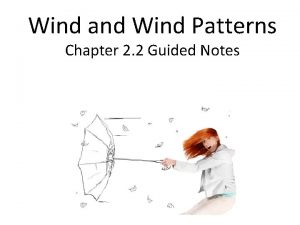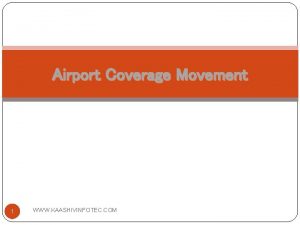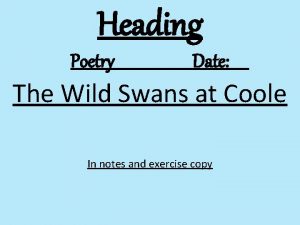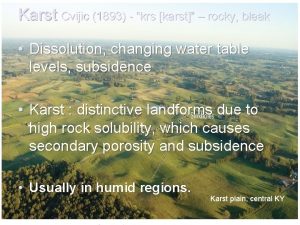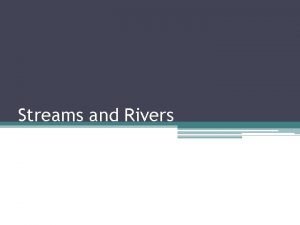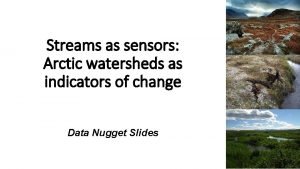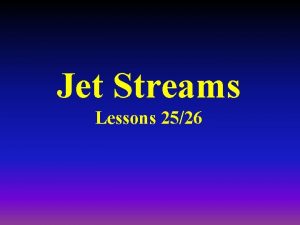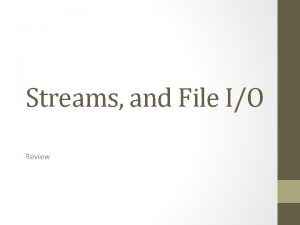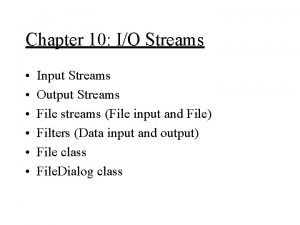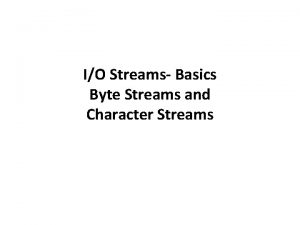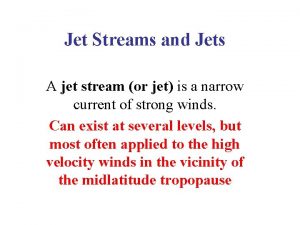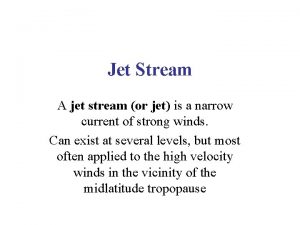Understanding jet streams Understanding jet streams What are








- Slides: 8

Understanding jet streams

Understanding jet streams What are jet streams? • Jet streams are narrow, fastmoving air currents (winds). • They are found at high altitude, at the boundary between the troposphere and stratosphere. • It might be useful to think of jet streams as almost like ‘rivers’ of very fast winds in the atmosphere. • Jet stream winds can blow at speeds from 50 mph to over 250 mph.

Understanding jet streams Jet stream locations • There are four jet streams • The two polar jet streams are found at latitude 50– 60 N and 50– 60 S. • The two sub-tropical jet streams are found about 30 north and south of the equator. • The northern polar jet stream, usually found at an altitude of 8– 11 km, has a major influence of the weather experienced by the UK. • Sub-tropical jet streams are weaker than polar jet streams.

Understanding jet streams The northern polar jet stream • This northern polar jet stream always blows from west to east. • It follows a circular path around the globe. • However, the jet stream meanders north and south in a series of huge waves known as Rossby waves. • North of the jet stream position is cold polar air, but south of the position is warm sub-tropical air. • Shifts in the position and size of Rossby waves means shifts in the position of cold or warm air over a particular location. Two different Rossby wave patterns. In the lower example, the waves are much more pronounced allowing warm air to move north, and cold air to sink south.

Understanding jet streams • Winds are caused by differences in air pressure between two locations. Causes • Air flows from areas of high air pressure to areas of low air pressure. • Air-temperature differences influence air pressure, because cold air is more dense than warm air. • Air temperature and air pressure differences are very large at the polar front. • This is the boundary zone between cold, dense air over the poles andwarm, and less dense air from the tropics. • It is at this location that the strongest jet stream is found. Image adapted from: http: //apollo. lsc. vsc. edu/classes/met 130/notes/chapter 10/jet_streams. html

Understanding jet streams Variability • The polar jet stream’s position is very variable, and cannot be predicted. • Generally, it is over the UK in the winter, and north of the UK in the summer. • However, this can and does change. • El Niño and La Niña events can also influence the position of the polar jet stream, contributing to seasonally unusual weather patterns. • The jet stream can even split, temporarily, into two arms. Different positions of the polar jet stream in relation to the UK

Understanding jet streams Influence on the weather • The polar jet stream is strongly linked to depressions – areas of low pressure — whose fronts bring rain to the UK. • If the jet stream sits over the UK for an extended period it can mean a long period of wet weather — as front after front is carried in from the Atlantic (winter 2013– 14) • If the jet stream moves north of the UK for a long period it can lead to drought and/or heatwave conditions (summer 1976 and 2003). • ‘Washout’ summers are caused by the jet stream being further south than expected.

Understanding jet streams This resource is part of Geography Review, a magazine written for Alevel students by subject experts. To subscribe to the full magazine go to www. hoddereducation. co. uk/geographyreview

